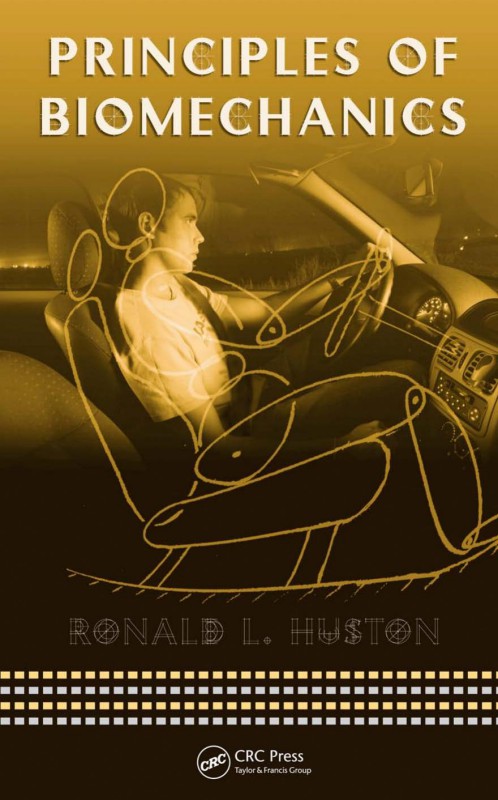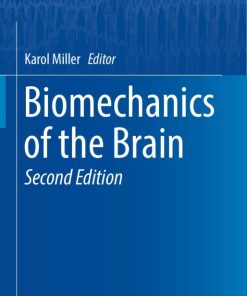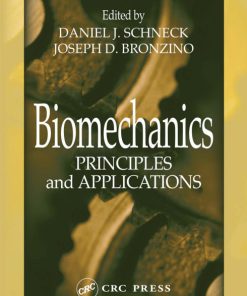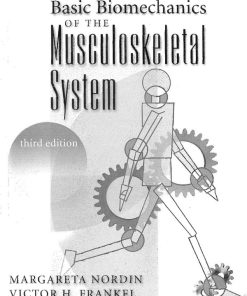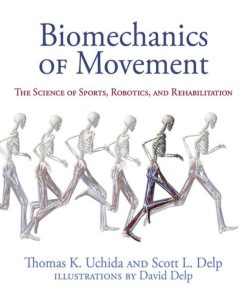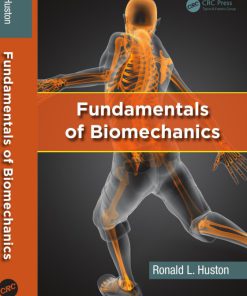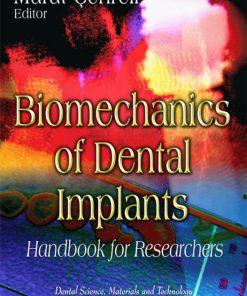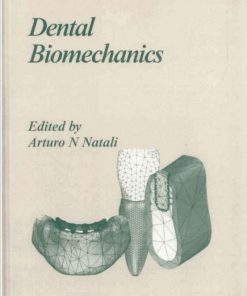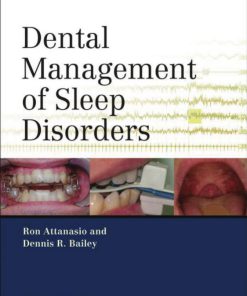Principles of Biomechanics 1st edition by Ronald Huston 9781000611786 1000611787
$50.00 Original price was: $50.00.$25.00Current price is: $25.00.
Authors:Ronald Huston , Series:Biomedical [135] , Tags:Law; Forensic Science; Medical; Biotechnology; Science; Mechanics; General; Technology & Engineering; Biomedical , Author sort:Huston, Ronald , Ids:9781420018400 , Languages:Languages:eng , Published:Published:Dec 2008 , Publisher:CRC Press , Comments:Comments:Research and study in biomechanics has grown dramatically in recent years, to the extent that students, researchers, and practitioners in biomechanics now outnumber those working in the underlying discipline of mechanics itself. Filling a void in the current literature on this specialized niche, Principles of Biomechanics provides readers with a so
Principles of Biomechanics 1st edition by Ronald Huston – Ebook PDF Instant Download/Delivery.9781000611786, 1000611787
Full download Principles of Biomechanics 1st edition after payment
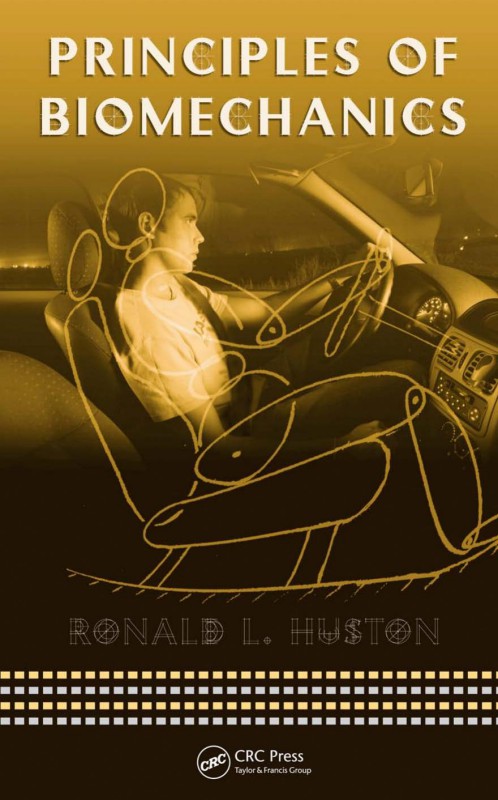
Product details:
ISBN 10: 1000611787
ISBN 13: 9781000611786
Author: Ronald Huston
Research and study in biomechanics has grown dramatically in recent years, to the extent that students, researchers, and practitioners in biomechanics now outnumber those working in the underlying discipline of mechanics itself. Filling a void in the current literature on this specialized niche, Principles of Biomechanics provides readers
Principles of Biomechanics 1st Table of contents:
Chapter 1 Introduction
1.1 Principal Areas of Biomechanics
1.2 Approach in This Book
References
Chapter 2 Review of Human Anatomy and Some Basic Terminology
2.1 Gross (Whole-Body) Modeling
2.2 Position and Direction Terminology
2.3 Terminology for Common Movements
2.4 Skeletal Anatomy
2.5 Major Joints
2.6 Major Muscle Groups
2.7 Anthropometric Data
References
Chapter 3 Methods of Analysis I: Review of Vectors, Dyadics, Matrices, and Determinants
3.1 Vectors
3.2 Vector Algebra: Addition and Multiplication by Scalars
3.2.1 Vector Characteristics
3.2.2 Equality of Vectors
3.2.3 Special Vectors
3.2.4 Multiplication of Vectors and Scalars
3.2.5 Vector Addition
3.2.6 Addition of Perpendicular Vectors
3.2.7 Use of Index and Summation Notations
3.3 Vector Algebra: Multiplication of Vectors
3.3.1 Angle between Vectors
3.3.2 Scalar Product
3.3.3 Vector Product
3.3.4 Dyadic Product
3.4 Dyadics
3.4.1 Zero Dyadic
3.4.2 Identity Dyadic
3.4.3 Dyadic Transpose
3.4.4 Symmetric Dyadics
3.4.5 Multiplication of Dyadics
3.4.6 Inverse Dyadics
3.4.7 Orthogonal Dyadics
3.5 Multiple Products of Vectors
3.5.1 Scalar Triple Product
3.5.2 Vector Triple Product
3.5.3 Dyadic/Vector Product
3.5.4 Other Multiple Products
3.6 Matrices/Arrays
3.6.1 Zero Matrices
3.6.2 Identity Matrices
3.6.3 Matrix Transpose
3.6.4 Equal Matrices
3.6.5 Symmetric Matrices
3.6.6 Skew-Symmetric Matrices
3.6.7 Diagonal Matrix
3.6.8 Matrix Measures
3.6.9 Singular Matrices
3.6.10 Multiplication of Matrices by Scalars
3.6.11 Addition of Matrices
3.6.12 Multiplication of Matrices
3.6.13 Inverse Matrices
3.6.14 Orthogonal Matrices
3.6.15 Submatrices
3.6.16 Rank
3.6.17 Partitioning of Matrices, Block-Multiplication
3.6.18 Pseudoinverse
3.7 Determinants
3.8 Relationship of 3 × 3 Determinants, Permutation Symbols, and Kronecker Delta Functions
3.9 Eigenvalues, Eigenvectors, and Principal Directions
3.10 Maximum and Minimum Eigenvalues and the Associated Eigenvectors
References
Bibliography
Chapter 4 Methods of Analysis II: Forces and Force Systems
4.1 Forces: Vector Representations
4.2 Moments of Forces
4.3 Moments of Forces about Lines
4.4 Systems of Forces
4.5 Special Force Systems
4.5.1 Zero Force Systems
4.5.2 Couples
4.5.3 Equivalent Force Systems
4.5.4 Superimposed and Negative Force Systems
4.6 Principle of Action–Reaction
References
Chapter 5 Methods of Analysis III: Mechanics of Materials
5.1 Concepts of Stress
5.2 Concepts of Strain
5.3 Principal Values of Stress and Strain
5.4 A Two-Dimensional Example: Mohr’s Circle
5.5 Elementary Stress–Strain Relations
5.6 General Stress–Strain (Constitutive) Relations
5.7 Equations of Equilibrium and Compatibility
5.8 Use of Curvilinear Coordinates
5.8.1 Cylindrical Coordinates
5.8.2 Spherical Coordinates
5.9 Review of Elementary Beam Theory
5.9.1 Sign Convention
5.9.2 Equilibrium Consideration
5.9.3 Strain–Curvature Relations
5.9.4 Stress–Bending Moment Relations
5.9.5 Summary of Governing Equations
5.10 Thick Beams
5.11 Curved Beams
5.12 Singularity Functions
5.13 Elementary Illustrative Examples
5.13.1 Cantilever Beam with a Concentrated End Load
5.13.2 Cantilever Beam with a Concentrated End Load on the Right End
5.13.3 Simply Supported Beam with a Concentrated Interior Span Load
5.13.4 Simply Supported Beam with Uniform Load
5.14 Listing of Selected Beam Displacement and Bending Moment Results
5.15 Magnitude of Transverse Shear Stress
5.16 Torsion of Bars
5.17 Torsion of Members with Noncircular and Thin-Walled Cross Sections
5.18 Energy Methods
References
Chapter 6 Methods of Analysis IV: Modeling of Biosystems
6.1 Multibody (Lumped Mass) Systems
6.2 Lower Body Arrays
6.3 Whole Body, Head/Neck, and Hand Models
6.4 Gross-Motion Modeling of Flexible Systems
References
Chapter 7 Tissue Biomechanics
7.1 Hard and Soft Tissue
7.2 Bones
7.3 Bone Cells and Microstructure
7.4 Physical Properties of Bone
7.5 Bone Development (Wolff’s law)
7.6 Bone Failure (Fracture and Osteoporosis)
7.7 Muscle Tissue
7.8 Cartilage
7.9 Ligaments/Tendons
7.10 Scalp, Skull, and Brain Tissue
7.11 Skin Tissue
References
Chapter 8 Kinematical Preliminaries: Fundamental Equations
8.1 Points, Particles, and Bodies
8.2 Particle, Position, and Reference Frames
8.3 Particle Velocity
8.4 Particle Acceleration
8.5 Absolute and Relative Velocity and Acceleration
8.6 Vector Differentiation, Angular Velocity
8.7 Two Useful Kinematic Procedures
8.7.1 Differentiation in Different Reference Frames
8.7.2 Addition Theorem for Angular Velocity
8.8 Configuration Graphs
8.9 Use of Configuration Graphs to Determine Angular Velocity
8.10 Application with Biosystems
8.11 Angular Acceleration
8.12 Transformation Matrix Derivatives
8.13 Relative Velocity and Acceleration of Two Points Fixed on a Body
8.14 Singularities Occurring with Angular Velocity Components and Orientation Angles
8.15 Rotation Dyadics
8.16 Euler Parameters
8.17 Euler Parameters and Angular Velocity
8.18 Inverse Relations between Angular Velocity and Euler Parameters
8.19 Numerical Integration of Governing Dynamical Equations
References
Chapter 9 Kinematic Preliminaries: Inertia Force Considerations
9.1 Applied Forces and Inertia Forces
9.2 Mass Center
9.3 Equivalent Inertia Force Systems
Chapter 10 Human Body Inertia Properties
10.1 Second Moment Vectors, Moments, and Products of Inertia
10.2 Inertia Dyadics
10.3 Sets of Particles
10.4 Body Segments
10.5 Parallel Axis Theorem
10.6 Eigenvalues of Inertia: Principal Directions
10.7 Eigenvalues of Inertia: Symmetrical Bodies
10.8 Application with Human Body Models
References
Chapter 11 Kinematics of Human Body Models
11.1 Notation, Degrees of Freedom, and Coordinates
11.2 Angular Velocities
11.3 Generalized Coordinates
11.4 Partial Angular Velocities
11.5 Transformation Matrices: Recursive Formulation
11.6 Generalized Speeds
11.7 Angular Velocities and Generalized Speeds
11.8 Angular Acceleration
11.9 Mass Center Positions
11.10 Mass Center Velocities
11.11 Mass Center Accelerations
11.12 Summary: Human Body Model Kinematics
References
Chapter 12 Kinetics of Human Body Models
12.1 Applied (Active) and Inertia (Passive) Forces
12.2 Generalized Forces
12.3 Generalized Applied (Active) Forces on a Human Body Model
12.4 Forces Exerted across Articulating Joints
12.4.1 Contact Forces across Joints
12.4.2 Ligament and Tendon Forces
12.4.3 Joint Articulation Moments
12.5 Contribution of Gravity (Weight) Forces to the Generalized Active Forces
12.6 Generalized Inertia Forces
References
Chapter 13 Dynamics of Human Body Models
13.1 Kane’s Equations
13.2 Generalized Forces for a Human Body Model
13.3 Dynamical Equations
13.4 Formulation for Numerical Solutions
13.5 Constraint Equations
13.6 Constraint Forces
13.7 Constrained System Dynamics
13.8 Determination of Orthogonal Complement Arrays
13.9 Summary
References
Chapter 14 Numerical Methods
14.1 Governing Equations
14.2 Numerical Development of the Governing Equations
14.3 Outline of Numerical Procedures
14.4 Algorithm Accuracy and Efficiency
Reference
Chapter 15 Simulations and Applications
15.1 Review of Human Modeling for Dynamic Simulation
15.2 A Human Body in Free-Space: A “Spacewalk”
15.2.1 X-Axis (Yaw) Rotation
15.2.2 Y-Axis (Pitch) Rotation
15.2.3 Z-Axis (Roll) Rotation
15.3 A Simple Weight Lift
15.4 Walking
15.4.1 Terminology
15.4.2 Modeling/Simulation
15.4.3 Results
15.5 Swimming
15.5.1 Modeling the Water Forces
15.5.2 Limb Motion Specification
15.5.3 Kick Strokes
15.5.4 Breast Stroke
15.5.5 Comments
15.6 Crash Victim Simulation I: Modeling
15.7 Crash Victim Simulation II: Vehicle Environment Modeling
15.8 Crash Victim Simulation III: Numerical Analysis
15.9 Burden Bearing—Waiter /Tray Simulations
15.9.1 Heavy Hanging Cable
15.9.2 Uniform Muscle Stress Criterion
15.9.3 Waitron/Tray Analysis
15.10 Other Applications
15.10.1 Load Sharing between Muscle Groups
15.10.2 Transition Movements
15.10.3 Gyroscopic Effects in Walking
15.10.4 Neck Injuries in Rollover Motor Vehicle Accidents
References
People also search for Principles of Biomechanics 1st :
principles of kinesiology
principles of kinesiology pdf
what are the principles of biomechanics
principles of biomechanics in physical education
You may also like…
eBook PDF
Dental Management of Sleep Disorders 1st Edition by Ronald Attanasio, Dennis Bailey 9781118701102

